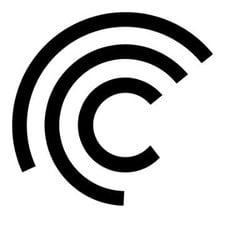
The volatile and unpredictable cryptocurrency market has certainly made some bold and lucky investors rich, but it has caused some to lose a lot of money, too. That’s the nature of an industry that is fraught with uncertain regulations, outright scams, and the potential to upend entire industries.
Despite the market’s troubles in 2022, investors might be looking to put some money to work while digital asset prices are down. One that stands out is Cardano (ADA -4.36%), which has fallen a whopping 73% this year (as of this writing). Should investors add ADA, Cardano’s native token, to their portfolios right now on the dip?
Cautious development process
Created in late 2017 by Ethereum co-founder Charles Hoskinson, Cardano is an innovative cryptocurrency that is often dubbed an “Ethereum killer.” That’s because Cardano tries to improve around the issue of scalability, which Ethereum lacked berfore The Merge upgrade. Investors seem to appreciate this focus, as Cardano has produced a monster return of 1,500% in the roughly five years it’s existed. And it is currently the eighth most valuable crypto in the world, with a market cap of $12 billion.
Cardano is unique from other cryptos in that the development process can be characterized as slow and steady. Updates are researched thoroughly and peer-reviewed before being implemented, a process that definitely adds time but can improve the blockchain’s growth by making sure mistakes are minimized.
Right now, Cardano is undergoing the fourth phase, known as Basho, which works on scaling solutions. The fifth and final phase, called Voltaire, will introduce governance functions to the network, making Cardano fully self-sustaining. And recently, Cardano underwent the Vasil hard fork, an upgrade designed to boost transaction speeds while attracting more developers to the ecosystem.
It’s nice to see cryptocurrencies continue to find ways to improve their networks to gain greater adoption over time. All of this activity bodes well for the future of Cardano.
Where’s the utility?
Despite being known mainly as a tool for financial speculation, I do believe that cryptocurrencies and blockchain technology have a future. But what matters to a particular cryptocurrency’s long-term viabililty is its potential to create real-world use cases. And Cardano looks promising in this department. Enterprise solutions like client onboarding in financial services and supply chain tracking for agricultural businesses are two areas in which Cardano’s technology can make a positive impact.
What’s more, an exciting layer-2 solution, known as Hydra, could provide a major boost to the throughput of Cardano’s blockchain. Each “Hydra head” can process 1,000 transactions per second (TPS). With 1,000 of these running simultaneously, Cardano could process a whopping 1 million TPS. Hydra is set to be released by early 2023.
The possibility of improved speed and scalability makes Cardano a potential disruptor in the world of decentralized finance (DeFi), challenging the dominance of Ethereum and Solana. According to DefiLlama, the total value locked on Cardano’s network, which measures the amount of money being held in various applications, was just $58 million, compared to $26 billion for Ethereum.
The planned launch of an algorithmic stablecoin called Djed provides another important catalyst for Cardano in the near term. Djed can be used to provide liquidity to certain DeFi protocols and can compete with popular stablecoins like Tether and USD Coin.
The price of one ADA, Cardano’s native token, is just over $0.34 as of this writing. As the network continues its thoughtful and deliberate development process and finds ways to implement utility in various industries, its price could rise over time. And that might be enough of a reason for investors to allocate a small percentage of their portfolios to Cardano.
Neil Patel has positions in Ethereum. The Motley Fool has positions in and recommends Cardano, Ethereum, and Solana. The Motley Fool has a disclosure policy.









































































Be the first to comment